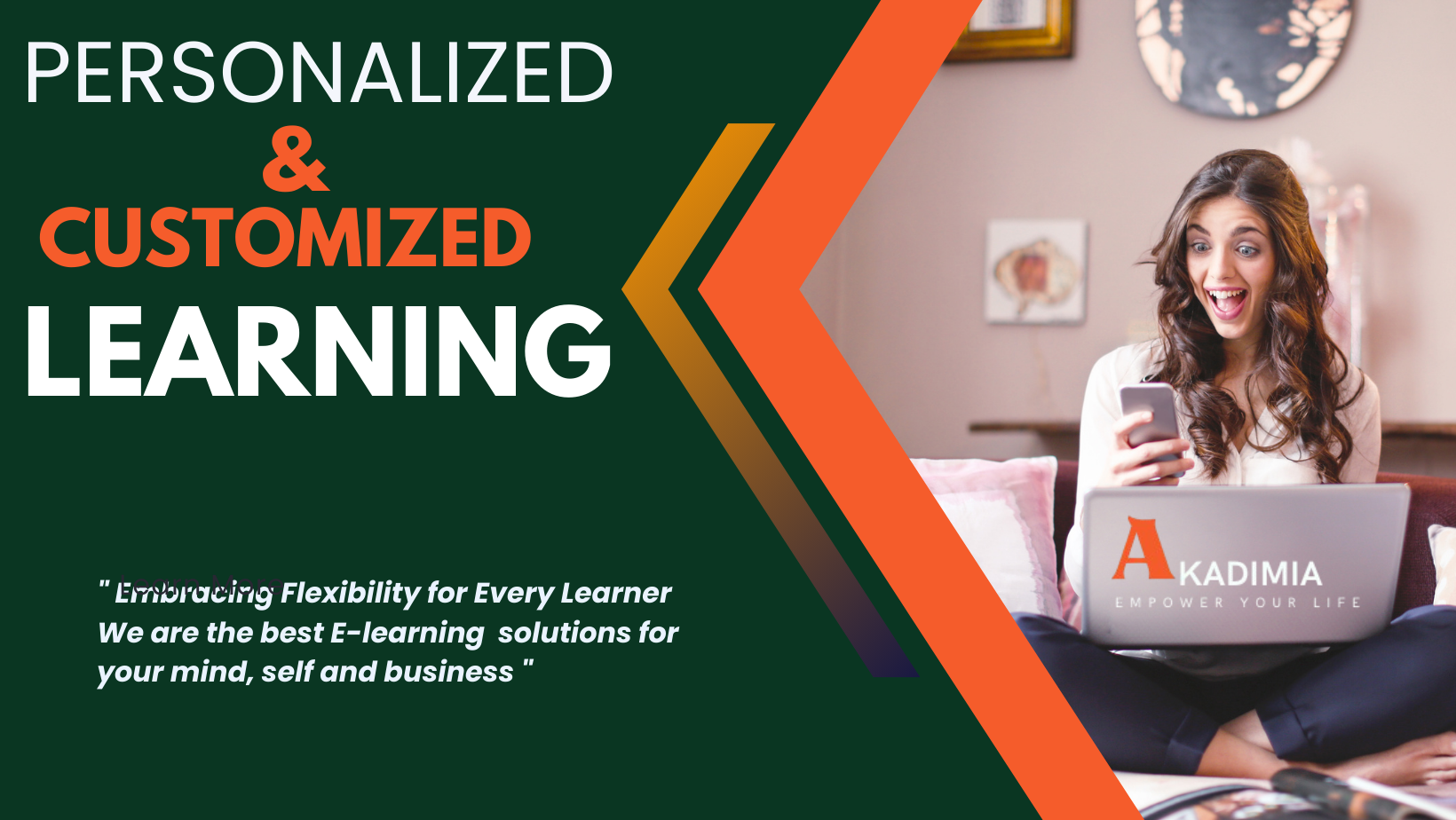How AI Is Transforming Learning, Assessments, and Teaching Methods
Revolutionizing Education: How AI Is Transforming Learning, Assessments, and Teaching Methods
Artificial intelligence (AI) is no longer a futuristic concept reserved for science fictionit's actively reshaping the world of education today. From personalized learning experiences for university students to AI-powered assessment tools that evaluate essays and assignments, academic institutions around the globe are embracing technology to enhance teaching and learning outcomes. In this post, we explore how AI is revolutionizing education, the benefits and challenges of its integration, and the ethical implications that both educators and students must consider in this brave new world.
The Rise of AI in Education
Education has traditionally relied on manual instruction, one-size-fits-all textbooks, and conventional classroom methods. However, the rapid evolution of digital technology has paved the way for AI to play a transformative role in academic settings.
A New Frontier for Learning
AI in education means more than automated grading systems or virtual tutors—it represents a comprehensive shift in how information is delivered, absorbed, and applied. By leveraging machine learning algorithms and data analytics, educators can now gain deep insights into student performance, learning habits, and even potential challenges. For instance, university students struggling with complex topics receive real-time, adaptive feedback tailored specifically to their learning pace and style. This personalized approach has the potential to make learning both effective and engaging.
Enhanced Teaching Methods
Educators benefit from AI too. Instead of spending endless hours grading papers or preparing lectures, teachers have more time to focus on designing creative lesson plans and interacting with students one-on-one. AI-driven tools help identify areas where students struggle the most, enabling educators to adjust their methods accordingly. This dynamic approach ensures that the classroom becomes a responsive learning environment rather than a static space bound by old methods.
As digital platforms like Akadimia continue to integrate AI functionalities, more educational institutions are realizing that the technology not only supports traditional teaching methods but also opens new doors for innovative approaches that were once unimaginable.
Personalized Learning: Bringing Tailored Education to University Campuses
One of the most exciting breakthroughs in AI integration is personalized learning—the art of tailoring education based on the unique needs of individual students.
Meeting the Unique Needs of University Students
University students are a diverse group with varying backgrounds, interests, and learning styles. With AI, educational institutions can create adaptive learning environments that cater to individual strengths and weaknesses. Imagine receiving course content that adjusts based on your previous quiz scores, study habits, and even your interests. AI algorithms sift through large amounts of data to identify patterns and suggest resources that maximize your understanding of complex subjects.
For example, if a student in an engineering course is struggling with a particular concept in thermodynamics, the system might automatically suggest interactive simulations, video tutorials, or tailored reading materials to reinforce the topic. This technology eliminates the “one-size-fits-all” approach and instead offers a learning journey that adjusts to each student’s pace.
Adaptive Learning Platforms in Action
Adaptive learning platforms are already being adopted in several universities in the UK, the United States, and elsewhere. These platforms monitor student engagement and performance over time. The insights garnered not only help students but also guide educators in identifying curriculum gaps, thereby fostering continuous improvement in the course material. AI’s ability to provide immediate, personalized feedback creates a more engaging and effective learning environment that motivates students to progress at their own pace.
Why Personalization Matters
The benefits of personalized learning via AI are numerous:
- Enhanced Engagement: Students are more likely to remain engaged when the content resonates with their personal interests.
- Better Retention:Customized learning experiences can improve knowledge retention by presenting material in ways that align with individual learning styles.
- Increased Confidence: When students receive resources that match their learning curves, they gain confidence in mastering challenging subjects.
- Efficient Use of Time: Adaptive systems streamline the learning process, ensuring that students are not overwhelmed with unnecessary content, allowing them to focus on areas that need improvement.
University campuses are witnessing a paradigm shift as AI unlocks the potential of every learner by creating a truly personalized educational experience.
AI-Powered Assessment Tools: Grading and Feedback Redefined
An area of growing interest and debate in academic circles is the use of AI-powered assessment tools. These technologies are transforming the way educators evaluate student performance, raising important questions about efficiency, fairness, and ethical implications.
The Promise of AI-Driven Assessment
AI-driven assessment tools can grade assignments, essays, and exams with remarkable speed and consistency. For educators, this means spending less time on manual grading and more time on intervention and mentorship. For students, immediate feedback on their work can lead to faster improvements and a better understanding of critical concepts.
Consider the scenario of using AI to grade essays. Algorithms scan text for structural integrity, grammar, coherence, and even the logical progression of ideas. This can be particularly useful in large lecture classes where individual attention is limited. The tools can highlight recurring errors, suggest improvements, and compare a student’s work against a vast database of academic standards.
How AI Influences Essay Grading: The Good and The Bad
On the upside, AI grading systems offer:
- Consistency: Unlike human grading, which may vary based on mood or subjective interpretation, AI offers objective evaluation.
- Speed: Automated systems provide instant feedback, enabling students to iterate on assignments quickly.
- Scalability: For large-scale assessments, AI handles vast numbers of submissions seamlessly.
However, ethical concerns also arise:
- Bias: If an AI system is trained on a biased dataset, it may reinforce existing inequities. For example, language nuances or regional expressions might be misinterpreted, leading to unfair penalization.
- Lack of Nuance: Essays are more than a set of correct answers. AI may miss the creativity, emotional appeal, or critical thinking that a human evaluator values, potentially discouraging innovative writing styles.
- Transparency: Students and educators alike might not understand how AI systems arrive at a particular grade, leading to trust issues and concerns over accountability.
Balancing Efficiency and Fairness
The key to successfully integrating AI-powered assessment tools lies in finding a balance. Institutions are increasingly adopting hybrid models wherein AI-generated assessments are reviewed by human teachers before final scores are awarded. This approach capitalizes on the efficiency of AI while ensuring that the nuanced and creative aspects of student work are given due consideration.
In today’s fast-paced academic environment, AI can be a powerful ally in assessment—provided it is implemented with transparency, oversight, and a commitment to fairness.
The Integration of AI in Traditional Teaching Methods
While the personalized learning experiences and AI assessment tools highlight the potential for technological advancement, the integration of AI into conventional teaching methods is equally transformative.
Augmenting, Not Replacing, Teachers
The goal of integrating AI in education is not to replace teachers but to augment their capabilities. AI tools can manage repetitive tasks, analyze student data, and provide targeted insights that help teachers refine their lesson plans. For example, an AI system that monitors student engagement during a lecture could alert the educator when a particular topic is not being well understood, prompting immediate clarification or a different teaching approach.
Interactive Learning Through Virtual Assistants
Virtual assistants and chatbots are now becoming common in academic settings. These systems are available 24/7 to answer student queries, offer study tips, or even direct learners to additional resources. This on-demand support bridges the gap between class hours and empowers students to seek help whenever they need it.
Such systems can also facilitate group projects by coordinating communication between team members, scheduling meetings, or sharing relevant documents. As AI continues to evolve, its role in fostering collaborative learning environments grows, ensuring that both teachers and students benefit from technological advances.
Revolutionizing Course Content Delivery
AI is also transforming the way course content is delivered. With the help of data analytics and content optimization algorithms, educators can curate digital resources that best match the learning patterns of their students. For instance, video lectures can be automatically segmented into digestible parts, and interactive quizzes can be
woven seamlessly into the narrative of the lesson.
This level of customization transforms the classroom into a dynamic, interactive space where every student has the opportunity to learn in the way that best suits them. The traditional lecture model gives way to a more engaging, student-centered approach that harnesses the power of technology to drive academic success.
Economic Influences: How AI-Driven Pricing and Access Affect Consumption
AI in education is often discussed purely in terms of learning outcomes and technology integration, but one must also consider its economic impact. The cost of educational technology and how it’s priced can influence both accessibility and overall adoption rates.
Cost Reduction Through Scalability
One of the primary drivers for adopting AI in education is the opportunity to reduce costs. AI-powered assessment and personalized learning platforms can handle large volumes of data, allowing educational institutions to scale their services without proportional increases in cost. This economic efficiency, in turn, makes quality education more accessible to students across different socio-economic backgrounds.
Affordable Access to High-Quality Learning
When costs are reduced through automation and optimized resource allocation, institutions can pass these savings on to their students. For university students, who may already be burdened by high tuition fees and living expenses, the availability of low-cost digital learning tools becomes a critical asset. Affordable access to personalized learning experiences means that more students can achieve their academic goals without the added financial strain.
Investing in Ethical AI with Long-Term Benefits
The initial investment in AI technology can be high, but the long-term gains—ranging from improved student performance to reduced administrative burdens—often outweigh the initial expenses. However, institutions must balance this investment with ethical considerations. For instance, when negotiating pricing with vendors of AI tools, universities must ensure that the systems they adopt are not only cost-effective but also transparent, secure, and free from bias.
By prioritizing ethical AI and affordable pricing, educational institutions can foster a learning environment that is both inclusive and forward-thinking.
Ethical Considerations: Navigating the Complex Landscape of AI in Education
The rapid integration of AI in education raises several ethical concerns that educators, institutions, and policymakers need to address.
Transparency and Accountability
One of the foremost ethical questions surrounding AI-driven educational tools is transparency. How do these systems arrive at their decisions? Whether it’s grading essays or recommending personalized learning content, both educators and students need to understand the underlying algorithms. Transparency is paramount to ensure that AI tools are making fair decisions and that any biases in the data do not unfairly disadvantage any group of students.
Data Privacy and Security
As AI systems in education rely heavily on data, ensuring the privacy and security of student information is critical. From learning management systems to intelligent tutoring systems, safeguarding personal data is not only a legal responsibility but also an ethical imperative. Educational institutions must adhere to strict data protection regulations and ensure that data is stored securely, used ethically, and only shared when absolutely necessary.
Fairness in Assessment
The use of AI in grading brings to light concerns about fairness. While automation promises consistency, it may also overlook the nuances of human expression and creativity. For instance, when AI is used to grade essays, it might undervalue an innovative argument simply because it does not conform to preconceived patterns. This could lead to unintended discrimination against students who think outside the box. Many educational institutions are now exploring hybrid models where AI assessments are double-checked by human educators, creating a safety net that ensures fairness without sacrificing efficiency.
The Risk of Over-Reliance on Technology
Another ethical dilemma lies in the potential over-reliance on technology. While AI can significantly enhance personalized learning experiences and streamline teaching methods, educators must exercise caution not to allow technology to supplant the human elements of empathy, creativity, and critical thinking. The balance between technology and human touch is a delicate one—ensuring that educators remain central to shaping academic experiences is crucial.
The Call for Continuous Monitoring and Regulation
With the rapid evolution of AI technology, ethical guidelines must be continuously revised. Institutions, educators, and policymakers need to work together to create frameworks that govern the use of AI in academic settings. Regular audits, ethical reviews, and stakeholder consultations are essential steps to ensure that AI remains a tool for positive transformation rather than an instrument of inadvertent harm.
Real-World Examples: Success Stories and Cautionary Tales
Real-world implementations of AI in education provide a mixed bag of success stories and lessons learned. Here are some illustrative examples:
How AI is Personalizing the Learning Experience for University Students
At several research-intensive universities, adaptive learning platforms driven by AI have dramatically improved first-year retention rates. Students who initially struggled with core subjects received tailored supportautomated tutoring sessions, interactive quizzes, and personalized recommendations—that not only improved their understanding but also boosted their confidence. University professors noted that while AI was instrumental in providing immediate feedback, its real value lay in freeing up time for one-on-one interactions, where the human element of teaching truly flourished.
The Ethical Implications of Using AI for Grading Essays
In another case study, a university piloted an AI-driven essay grading system in a large composition course. The system was lauded for its consistency and speed; however, student feedback revealed concerns about the lack of nuance in the grading process. Students who employed creative writing styles felt that the AI did not fully capture their efforts, leading to calls for integrating human review in the grading process. This cautionary tale underscores the need for ethical oversight in deploying AI systems in sensitive academic contexts.
Balancing Cost and Quality with Scalable AI Solutions
In regions where educational funding is limited, AI presents an opportunity to deliver high-quality education at relatively low cost. One institution in the United Kingdom deployed AI-driven simulations to teach complex and expensive laboratory techniques. With AI-powered virtual labs, students could access advanced experiments without the prohibitive costs of physical equipment. While the initiative was largely successful from a cost-saving perspective, the institution continuously monitored user feedback to ensure that the digital experience did not compromise educational quality.
The Future of AI in Education: Opportunities and Challenges
Looking ahead, the integration of AI in education promises to introduce even more transformative changes. Here are some trends to watch for:
Increased Personalization and Data-Driven Insights
As AI algorithms become more sophisticated, the level of personalization in learning environments will continue to improve. Future systems may incorporate real-time biometric feedback—such as stress or engagement levels—to adjust teaching methods instantly. Imagine an AI system that modifies course pace or suggests breaks based on your physiological responses during a challenging lecture. These innovations could lead to a truly adaptive learning ecosystem that responds dynamically to each learner's needs.
More Inclusive and Accessible Education
One of the most commendable promises of AI in education is its potential to democratize learning. With affordable, AI-driven tools, students in under-resourced areas, across both urban and rural settings, can gain access to quality education. This improvement in access holds the promise of reducing educational inequities and fostering a more inclusive academic environment on a global scale.
Continued Ethical and Regulatory Navigation
The challenges associated with AI in education are not solely technological but also deeply ethical and regulatory. Institutions will need to invest in research and dialogue surrounding the ethical implications of technologies like AI-powered grading, predictive analytics, and personalized learning. Collaborative efforts between technology developers, educators, students, and regulatory bodies will be essential for creating ethical guidelines that keep pace with rapid innovation.
Enhancing Teacher Roles in a Tech-Driven Landscape
Even as AI takes on more tasks traditionally handled by teachers, the human aspect of education remains irreplaceable. The future of teaching is likely to be a combination of technology-enabled instruction and personalized mentoring. AI tools can manage administrative tasks, assess student performance, and provide data-driven insights, but it is the teacher’s role to inspire, motivate, and create a nurturing environment where learning thrives.
Concluding Thoughts: Striking the Right Balance
The transformative potential of AI in education is immense. From personalized learning platforms that adapt to individual student needs to AI-powered assessment tools that promise consistency and efficiency, the benefits are clear. Yet, as with any powerful tool, the integration of AI in academic settings must be approached with caution and ethical consideration.
- Personalization vs. Standardization: While AI offers tailored learning experiences, educators must remain vigilant to ensure that individual creativity and critical thinking are not sidelined by standardized metrics.
- Efficiency vs. Empathy: Automation of grading and assessment can save time, but it should never replace the empathy and nuanced understanding that human teachers provide.
- Innovation vs. Oversight: Embracing technological innovation requires robust ethical frameworks and continuous regulatory oversight to protect sensitive student data and ensure fair outcomes.
For university students, educators, policymakers, and stakeholders in education, the journey with AI is just beginning. The collaborative effort to balance technology with human values will define the success of AI integration in academic settings for generations to come.
As an educator, you might wonder how to implement AI tools in your classroom to enhance both teaching efficiency and student learning. As a student, you might be curious about how these systems can tailor your educational journey, making learning more engaging and personalized than ever before. And as policymakers and institutions take on the challenge of regulating these technologies, the goal should always be to foster an environment where innovation and ethics go hand in hand.
In summary, AI in education is not a silver bullet that solves every challenge overnight. Instead, it is a powerful catalyst for change one that requires thoughtful integration, ongoing research, and above all, a human touch that keeps the spirit of learning alive. Whether you are interested in the potential of personalized learning for university students or the ethical implications of AI in grading, the conversation is just beginning. The future of education is being written today through innovation, collaboration, and a commitment to making learning better for everyone.
Final Reflections and a Call to Conversation
The integration of AI in education is both promising and complex. As we navigate this landscape, we must remember that technology is a tool—one that must be managed carefully and ethically. Here are some key takeaways:
- Embrace Personalization: AI-driven education systems have the potential to cater to individual learning styles, empowering students to learn at their own pace.
- Leverage Efficiency but Ensure Fairness: While AI can automate many routine tasks like grading, it must be implemented with oversight to account for the nuanced nature of human creativity and expression.
- Prioritize Data Privacy: With the vast amounts of educational data being processed by AI, safeguarding student and teacher information is non-negotiable.
- Foster Empathy and Collaboration: No matter how advanced AI becomes, the human touch in teaching and mentorship is irreplaceable. Educators must serve as both guides and role models.
Ultimately, AI’s role in education is about enhancing the learning experience in ways that make education more accessible, engaging, and effective while also protecting ethical standards. As we continue to explore and shape the future of education, it remains clear that the success of these technologies will depend on striking a delicate balance between innovation and human values.
I invite you, educators, students, and policymakers alike, to share your experiences and thoughts on how AI is impacting your learning or teaching journey. What concerns you about AI integration? What successes have you witnessed that make you hopeful for the future of education? Let’s continue this conversation and work together to ensure that the future of academic excellence is bright, inclusive, and ethically grounded.
Join the Conversation
Are you already using AI tools in your educational setting, or are you planning to adopt them soon? What measures are you taking or would you like to take to ensure that AI enhances academic outcomes without compromising fairness or privacy? Your experiences and insights are invaluable in shaping the future of AI in education. Share your thoughts in the comments below, connect on social media, or participate in local educational events dedicated to discussing the impact of technology on learning.
Together, we can harness the power of AI in education not only to transform how we teach and learn but also to build a future where every student’s potential is realized fully, equitably, and beautifully.
Artificial intelligence is on a trajectory to redefine education by making it more responsive, accessible, and effective. Whether you’re a student striving for a personalized learning path or an educator seeking innovative tools to make a greater impact, AI offers transformative opportunities and challenges that will shape the academic landscape for years to come.
In the end, technology should serve the mission of education: to empower minds, nurture creativity, and cultivate the capacity for lifelong learning. As we stand on the threshold of this exciting era, let’s remember that while AI can guide us towards a brighter future, it is the human spirit of curiosity and compassion that will truly make that future a reality.









